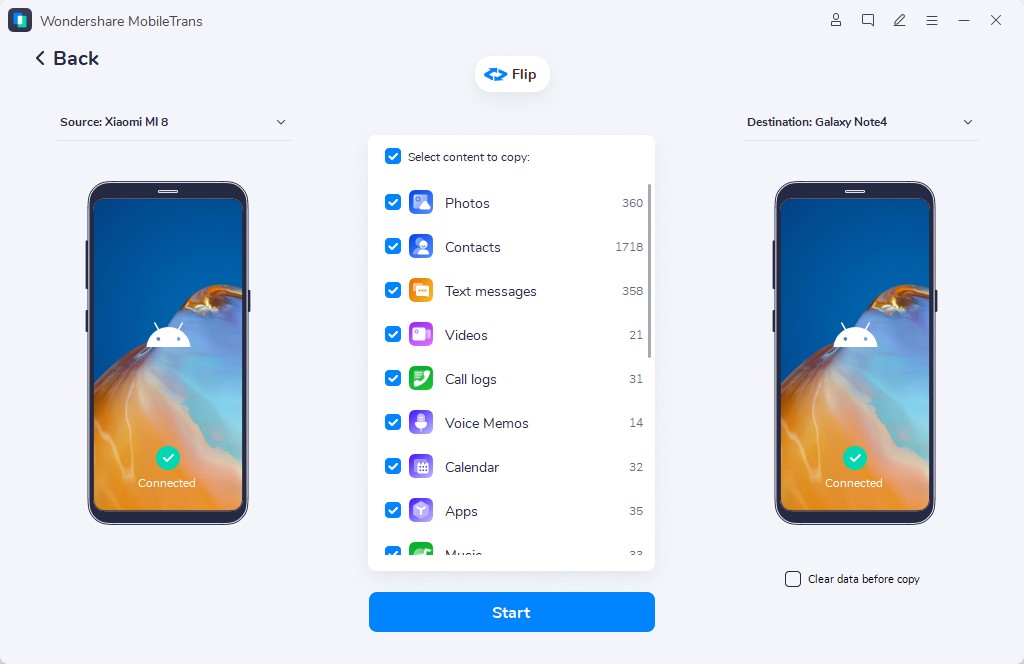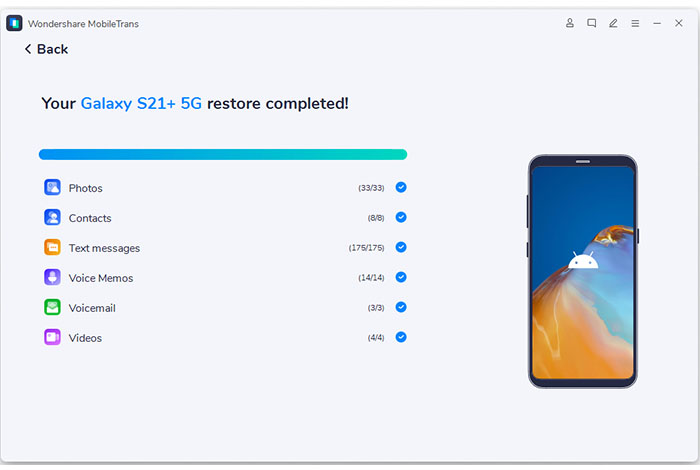In recent years, Samsung's flagship smartphones have relied on Qualcomm's Snapdragon processors rather than their in-house Exynos chips. However, whispers in the tech world suggest an urgent change.
This article covers the rumors of Samsung's strategic shift on Exynos 2400, exploring the meanings of the reintroduction of the Exynos series, particularly focusing on the promising Samsung Exynos 2400.
In this article
The Comeback of Samsung Exynos 2400 Chip: Rumors and Speculations

Rumors are heating up around Samsung's Exynos 2400 chip potentially making a comeback. In 2013, Samsung introduced the Exynos 2400, their debut in 64-bit mobile processors. Despite its potential, it got overshadowed by Qualcomm's stronger Snapdragon processors in Samsung's top devices.
New performance tests for a secretive Samsung processor suggest a possible successor to the Exynos 2400. This chip has eight cores and achieves an Geekbench, surpassing recent Snapdragon and Exynos processors.
If these rumors are accurate, Samsung might be preparing to compete with Qualcomm once again in the high-end mobile chip market.
What is the speculation suggesting?

The chip might have three clusters with eight cores total: one super-fast Arm Cortex-X3 core over 3 GHz, three Cortex-A715 cores, and four Cortex-A510 cores for efficiency. This setup could bring a big jump in AI and machine learning power compared to older Exynos chips.
Additionally, the chip is expected to be built on an advanced 4nm manufacturing process allowing for improved power efficiency. The same process used for Apple’s lauded A16 Bionic could set this Exynos successor apart.
The tests show the chip might do better than Qualcomm's Snapdragon 8 Gen 2 in both single and multi-core jobs. If this is true, Samsung could have a chip that keeps Exynos competitive in upcoming Galaxy S phones, stopping it from falling behind.
The upcoming chip from Samsung seems promising. It's set to bring improvements in software, graphics, and CPU power. If successful, it could challenge the dominance of the leading Android chips and might even find its place in devices like the rumored Galaxy S24. This potential could reignite global excitement among Samsung fans for Exynos chips.
Part 2: Samsung Exynos 2400 VS Samsung Snapdragon: Comparing the Titans!
While full reviews and benchmark testing remain unavailable until Samsung announces an Exynos sequel, early Geekbench leaks fuel projections of the upcoming chip’s prowess.
The Geekbench 6 tests revealed scores of 2067 in single-core and 6520 in multi-core for the Samsung Exynos 2400. In contrast, the Snapdragon 8 Gen 2, found in the Samsung Galaxy S23 Ultra, achieves 1973 in the single-core test and 5148 in the multi-core test.
These scores showcase a compelling performance edge for the Exynos 2400 over the Snapdragon 8 Gen 2, suggesting a potential shift in the competitive landscape. As technology advances, these benchmarks serve as vital indicators, influencing user expectations and industry benchmarks for future devices. This ongoing rivalry between processors continues to shape the ever-evolving realm of mobile technology.
Here’s a table that compares the Samsung Exynos 2400 and Samsung Snapdragon chip in a nutshell:
| Spec | Rumored Exynos 2400 Successor | Snapdragon 8 Gen 2 |
| Manufacturing Process | 4nm (expected) | 4nm |
| CPU | 1x Cortex-X3 over 3GHz 3x Cortex-A715 4x Cortex A510 | 1x Cortex-X3 2x Cortex-A715/610 2x Cortex-A510 |
| GPU | Unconfirmed - likely advanced ARM Mali | Adreno 740 |
| AI Acceleration | Custom ML hardware (expected) | Hexagon processor |
| Geekbench Score | 2067 single / 6520 multi (leaked) | 1973 single / 5148 multi |
| Performance Level | Projected to match/exceed Snapdragon flagship | Current Android flagship performance |
So, yes! If sustained across full reviews, this signals the successor could topple the Snapdragon giant in solo workload handling.
Part 3: Will Samsung Exynos 2400 Solve The Old Exynos Issues?
As the Samsung Exynos 2400 made its debut, it brought with it a wave of anticipation and scrutiny within the tech community. However, alongside its promising advancements, several early observations and user feedback unveiled certain persistent issues that garnered attention. These initial hiccups shed light on specific areas where the Exynos 2400 faced scrutiny and comparison against its contemporaries.
Here are some of the key concerns that emerged during the chip's initial phases:
- Performance Disparities.
- Thermal Management.
- Battery Efficiency.
- Compatibility Challenges.
Solving Exynos Pain Points: How Samsung Addressed the Issues with Exynos 2400?
| Issue on Older Exynos Chips | Rumored Exynos 2400 Improvements |
| Inferior CPU performance vs Snapdragon | Leaked benchmarks show CPUs meeting/beating the latest Snapdragon Gen 2 flagship. |
| Power efficiency deficits | Built on an industry-leading 4nm process for enhanced efficiency. |
| Thermal throttling under load | Octa-core design with a tri-cluster can mitigate the heat. |
| Weaker graphics performance | Could match Adreno 740 or use a new ARM Mali GPU for boost. |
| Lack of ML acceleration hardware | Integrating AI silicon like Tensor G2 could enable next-gen experiences. |
| Modem connectivity gaps | Support for the latest cellular standards is expected. |
| Manufacturing consistency issues | Leveraging TSMC or improved Samsung 4nm could resolve this. |
| App compatibility gaps | Eliminated with performance on par with Snapdragon. |
| OS update delays | Resolved chip supply instability enables faster updates. |
| Unreliable data transfers | Resolved with improved speeds and stability |
Exynos users have faced issues like apps running differently and delayed OS updates. But with the upcoming Exynos revamp, the improved power will make transferring content between any Galaxy devices smoother than ever before.
Part 4: How to Fix Possible Issues with Samsung Exynos 2400?
Older Exynos chips had trouble with tasks like moving data and doing full backups. But the new Exynos 2400 successor might solve this with a better CPU and software. This could make switching phones easier.
Here are targeted solutions for the two issues associated with the Samsung Exynos 2400.
-
Inconsistent App Experience and Late OS Upgrades:
- Software Updates: Keep the device updated with the latest firmware and software patches provided by Samsung. Regular updates often address app compatibility issues and enhance system stability.
- App Optimizations: Check for app-specific updates in the respective app stores. Developers frequently release updates to address performance issues on specific devices.
- Developer Options: Explore the developer options in the device settings (if available) and consider tweaking settings for app compatibility or performance, but exercise caution while making changes here.
- Factory Reset Consideration: As a last resort, if issues persist, consider performing a factory reset after backing up essential data. This can resolve software-related glitches affecting data transfers.
-
Challenges in Data Transfers and Full Backup Restores:
- Utilize Mobile Transfer Tools: Leverage Samsung's migration tools or third-party applications like MobileTrans to ensure seamless data transfers between Galaxy devices.
Seamless data transfers between Galaxy devices, especially with the Samsung Exynos 2400 chip, can be achieved effortlessly with Wondershare MobileTrans. While Samsung's migration tools offer a standard solution, third-party applications like MobileTrans provide an additional layer of flexibility and reliability.
MobileTrans ensures hassle-free data transfers and complete backup restores, making the transition between devices a smooth and worry-free experience for Exynos 2400 users. With its user-friendly interface and comprehensive support, MobileTrans stands as an optimal choice for those seeking a reliable, swift, and secure data transfer solution.
Wondershare MobileTrans
No Challenges of Data Transfer, Backup and Restore with MobileTrans!
- • No data loss. No data leaks.
- • Support various data, including files, photos, videos, apps, contacts, etc.
- • Support transferring from Android to iPhone, iPhone to Android, Android to Android and iPhone to iPhone.

 4.5/5 Excellent
4.5/5 ExcellentHere are the steps to use the Wondershare MobileTrans tool to transfer your data from one device to another.
-
Download and install MobileTrans on your computer. Then launch the software.
-
Choose the "Phone Transfer" tab from the available options in the MobileTrans interface and then select “Phone to Phone”.

- Connect both your source and target devices (e.g., old and new phones) to the computer using cables. Ensure they are recognized by the computer.
- Once both devices are connected, you'll see them displayed on the MobileTrans interface. Ensure the source and target devices are correctly labeled (source as the old device and target as the new one) to avoid data overwriting.
- Then select the types of data you want to transfer. MobileTrans allows transferring contacts, messages, photos, videos, music, and more.

-
Once you've selected the data types, click on the "Start" or "Transfer" button to begin the transfer process.
-
MobileTrans will start transferring the selected data. You can monitor the progress on the screen. After the transfer is complete, it will display a confirmation message. You can then safely disconnect both devices from the computer.

-
To ensure all data has been transferred successfully, check the target device for the transferred data, such as contacts, photos, messages, etc.
By prioritizing software updates, exploring optimization options, and utilizing dedicated transfer tools, many of the issues related to inconsistent app experiences, delayed updates, and data transfer problems associated with the Samsung Exynos 2400 can be effectively addressed.
Conclusion
After years of trailing rival Qualcomm Snapdragon chips, Samsung looks poised to re-enter the ring with its heavyweight Exynos processor.
If proven accurate, Samsung's Exynos 2400 chipset could address previous shortcomings and deliver major improvements. This would enable Samsung to compete with the industry's best performers, showing significant advancements in processing power, graphics, and overall performance.






